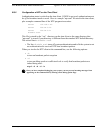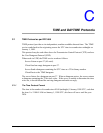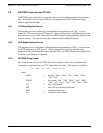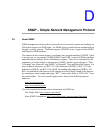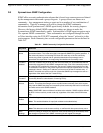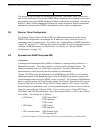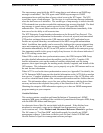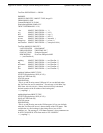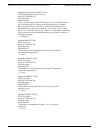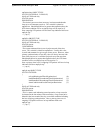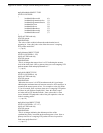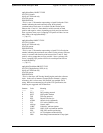
D-110 TimeVault™ User’s Manual 6000-100AppD.fm Rev. D
Appendix D: SNMP – Simple Network Management Protocol Serial or Telnet Configuration
The factory default settings are summarized as follows: community one is called public
and is set to read-only access for the SNMP MIB; community two is named system and it
has normal access to the SNMP database; all other communities are disabled. All traps are
disabled. Many SNMP management utilities are written with these default assumptions
and thus the Symmetricom SNMP is immediately usable without configuration.
D.3 Serial or Telnet Configuration
Use Serial or Telnet Function F100 CONFIG to obtain information about the current
SNMP/NTP configuration, or to change the IP addresses, traps, read/write access, or
community names and parameters. For details, see “Configuration of SNMP Parameters
Using FTP” on page 4-72. Although this option is available, it is much faster and easier to
configure SNMP parameters over the Internet. For details, see “Remote SNMP
Configuration” on page 3-38.
D.4 Symmetricom SNMP Enterprise MIB
Introduction
A Management Information Base (MIB) is a database of managed objects that have a
hierarchical structure. There are common or vendor-specific managed objects. The
Internet community has over 1,000 objects registered. The objects themselves are
representations of real physical network properties or information.
Using a TCP/IP network and Symmetricom's SNMP Enterprise MIB, you can remotely
obtain information on the health and status of the NTP application and the primary time
synchronization source using the SNMP version 1 protocol. The Enterprise MIB database
has five variable groups: the Trap Message Group, the Network Time Protocol Group, the
Network Time Server Control Group, the GPS Group, and the ACTS Group. Presently,
the control group is preliminary and is not implemented in the current version of software.
Traps are sent on Change of Status (COS). There are three types of traps: NTP Status,
GPS Status, and GPS Antenna Status. All of them report failures, as well as the return to
active status. The settings are as follows:
• NTP Status: NTP Client Mode*
NTP Unlocked
NTP Locked
• GPS Status: GPS Locked
GPS Unlocked
• GPS Antenna Status: GPS Antenna Fault
GPS Antenna OK
*In NTP Client Mode, NTP is using another NTP server as its timing reference, instead of GPS.
SNMP Global Enable Traps Yes




